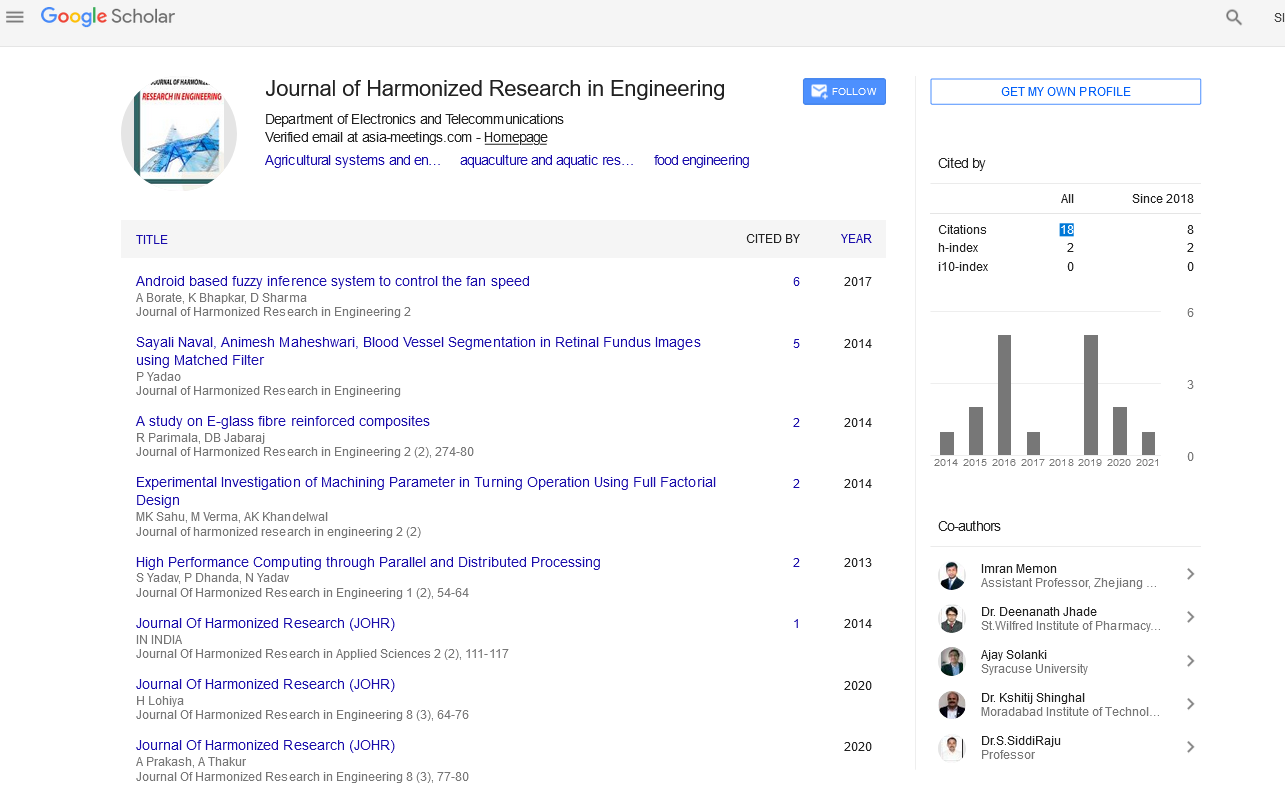Commentary - (2022) Volume 10, Issue 4
ADVANCEMENT OF ENGINEERING WORKER-HOUR CONTROL USING SEMANTIC ANALYSIS MODEL
Aleksei Belov*Received: Nov 01, 2022, Manuscript No. JHRE-22-85080; Editor assigned: Nov 04, 2022, Pre QC No. JHRE-22-85080 (PQ); Reviewed: Nov 18, 2022, QC No. JHRE-22-85080; Revised: Nov 25, 2022, Manuscript No. JHRE-22-85080 (R); Published: Dec 05, 2022, DOI: 10.30876/2347-7393.22.10.208
Description
An engineering firm needs a good coding system to create worker-hour records that categorise the hours spent on different engineering tasks. However, the majority of engineering firms categorise worker-hour data by a project number, giving management little useful information. In order to support cost estimation and staff engineer allocation in ongoing and upcoming projects, this effort creates an improved work-time coding system that correlates employee hours with engineering deliverables and expertise. The effectiveness of a coding system is assessed in terms of the completeness of the information it provides, the suitability of the information structure, the meaning of the coding, and the effectiveness of phrasing using a novel semantic analysis model. In-depth knowledge regarding the coding systems used by five significant engineering businesses in Taiwan is also provided by this work. A case study of the suggested coding system is given, along with comments from practitioners. Finally, various coding systems can be improved using the six-step process presented here.
A construction project’s overall cost is made up of its construction costs and engineering costs. However, considering that construction expenses make up a sizable fraction of the overall project cost, the majority of pertinent research concentrate on either the estimation or control of these costs. Even if engineering expenditures are relatively low, the calibre of the engineering work has a significant impact on whether project demands and requirements are met effectively and whether scheduled construction activity can proceed afterward. That is, the success of the entire building project depends on the engineering work being efficiently controlled.
For an engineering firm (or consulting firm), producing high- quality engineering work depends on the efficient control of engineering costs to ensure profitability. Controlling the costs of an engineering firm requires managing direct compensation expenses. The hourly wage multiplied by the number of workers deployed equals the direct salary cost. Thus, keeping track of each engineer’s actual work hours on a given project is essential to properly managing engineering expenditures. The majority of engineering businesses track the number of worker hours used in relation to the overall number of contractual worker hours using paper timesheets or computer systems. The entire number of anticipated worker-hours must not be exceeded in order to avoid a cost overrun.
An engineering firm can choose to assign fewer engineers to the task than anticipated, for instance, if there aren’t enough worker hours left for a project. This technique can be easily supported by a straightforward coding scheme that uses project numbers. A construction company needs an efficient cost code structure to classify construction costs in order to estimate and control the total costs of a current project or future projects, just as an engineering firm needs a good coding system to generate various worker-hour accounts to categorise the worker-hours that are spent on various engineering jobs. One of the biggest engineering companies in Taiwan has discovered the shortcomings of the current methods. Around 620,000 worker-hour data for 1,696 engineering projects are specifically included in business E’s database, although management-supporting information is sparsely distributed within this vast amount of historical data. Management is unable to calculate the number of worker-hours spent on an engineering task or deliverable in order to determine the costs or worker-hours that may be needed for a new engineering project.
Additionally, management is unable to determine from the data at hand which employees have previous expertise performing a specific engineering task, preventing them from being allocated to a new project that also requires that job. Rephrased, company E is aware that their management is not supported by the coding system they use to store engineering worker-hour data. Therefore, the company conducted research to upgrade their current coding method. Some academics have looked into the nature and structure of engineering cost components because they understand how important it is to successfully control engineering costs for the project’s overall success. While other people have looked into whether or not engineering fees are too cheap to support top-notch technical work. A coding system or information classification system that can be utilised as a standard by all engineers at an engineering firm is apparently necessary for the recording of engineering worker-hours.

Google Scholar citation report
Citations : 43
Journal of Harmonized Research in Engineering received 43 citations as per google scholar report









